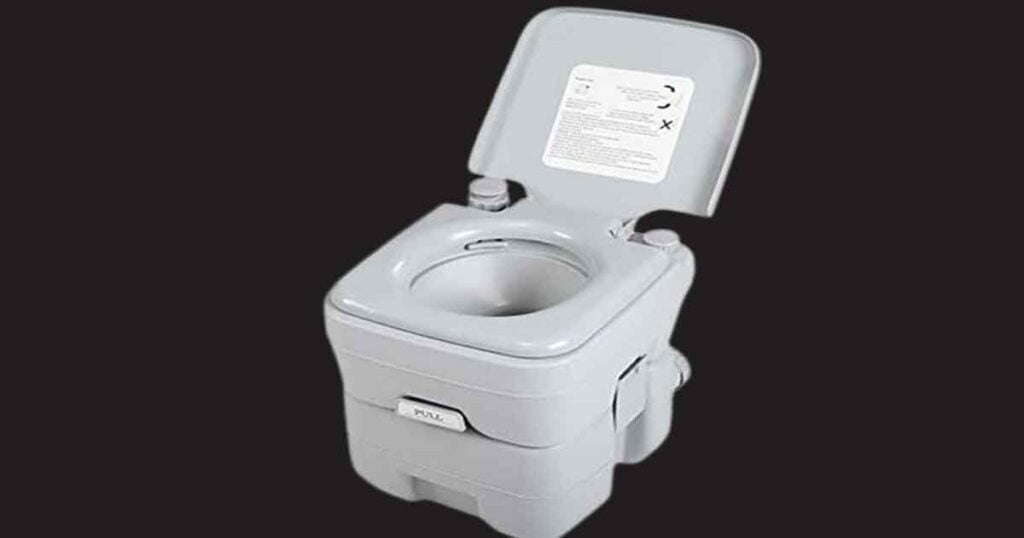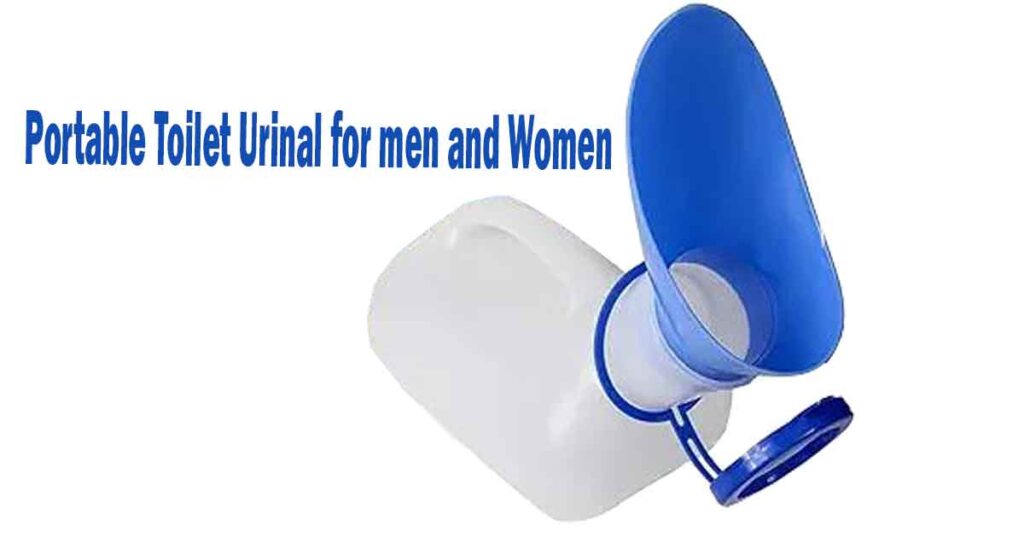
The allure of the great outdoors beckons, offering an escape from the hustle and bustle of urban living-. Yet, amidst the serenity of nature, one practical challenge persists—the absence of convenient restroom facilities. When the nature calls, and it inevitably does, having the best camping toilet becomes paramount for a comfortable and environmentally responsible outdoor experience.
Deciding on a Portable Toilet
Selecting the right portable toilet is a pivotal decision that hinges on various factors. The length and remoteness of your expedition are, expected conditions, the weight, volume, ease of setup-, and waste disposal methods all demand careful consideration. Privacy is a key factor, as is the unit’s environmental footprint.

For backpackers, lightweight and foldable models- prioritize portability, while flushable versions may suit established campsites. Compare holding capacity and sanitation options like biodegradable bags or chemical treatments to align with your needs and Leave No Trace principles.
Space and Portability
When venturing into the outdoors, every inch and ounce matter. Compact and lightweight camping toilets are essential, especially for those with limited space in vehicles or backpacks. Look for foldable designs and collapsible features that- conserve space when not in use.
A camping toilet’s design significantly impacts its portability and overall outdoor experience-. Despite prioritizing portability, durability is non-negotiable. Quality materials and minimal moving parts ensure a stable and comfortable experience in the rugged outdoors!
- Deciding on a Portable Toilet
- Easy of Use and Maintenance camping toilet
- Camping toilet Environmental Impact Considerations
- Chemical Toilets Explained
- How They Work
- Best Practices for Disposal
- Composting Toilets: An Eco-Friendly Choice
- Understanding the Composting Process
- DIY Solutions or the Budget-Conscious
- Simple Bucket Toilets for outdoor camping
- Advanced Homemade toilet Designs
- Precision in design guarantees maximum efficiency
- Personalized decor and reflect your camping style
- Innovation extends to sanitation and ease of use
- Detail-oriented features make a substantial difference
- Safe disposal of waste
Easy of Use and Maintenance camping toilet
For outdoor enthusiasts, a- straightforward setup is crucial. A camping toilet should deploy quickly, without the hassle of complex assembly instructions. Swift dismantling is equally important for the stress-free takedown during camp breakdown.
Prioritize ease of cleaning by selecting models with smooth, seamless construction that minimizes waste adherence and simplifies sanitizing. Look for toilets with removable waste tanks or liners-, streamlining the disposal process and reducing maintenance efforts.
User-friendliness extends to waste disposal. Opt for toilets with clear guidelines for waste management, aligning with environmental regulations and Leave No Trace principles. Systems with easy-to-handle waste bags or chemical additives offer efficient and sanitary handling!!!
Consider long-term durability and maintenance requirements. High-quality camping toilets come with manufacturer warranties, indicating confidence in product longevity-. Fluid systems may require gasket and seal replacement; while bag-based models often demand less upkeep.
Camping toilet Environmental Impact Considerations

When selecting a camping toilet, the potential environmental impact must be a top consideration. Portable solutions should align with the Leave No Trace principles, which advocate for minimal impact on natural environments.
In the backcountry, proper human waste disposal is crucial to preserving the ecosystem. Inadequate sanitation can lead to soil contamination, water pollution, and negative effects on wildlife. Therefore, it’s imperative to choose a toilet system that effectively manages waste, contains odors, and can be emptied at designated facilities or through responsible processes.
Biodegradable bags or additives are preferable where permissible, as they break down waste without harmfully altering the soil composition. When using chemical treatments, it’s essential to select eco-friendly options that won’t leach into the ground or waterways, further exemplifying a commitment to conservation.
Ultimately, the camping toilet you choose should be part of a broader ethic of environmental stewardship. By picking a model that ensures waste is handled responsibly and with the least possible impact, you contribute to the health and sustainability of our outdoor spaces, safeguarding these areas for future generations to explore.
Chemical Toilets Explained
Chemical toilets are a popular portable option that uses chemicals to deodorize and break down waste. Unlike compostable solutions that encourage natural biodegradation, chemical toilets utilize active agents to manage odor and sanitation.
These systems generally comprise two tanks: an upper, fresh water tank for flushing the toilet, and a lower, holding tank where waste and chemicals combine. This holding tank contains a solution that neutralizes odors and helps liquefy solid waste, making disposal easier and more hygienic.
“The blue goo” often refers to the deodorizing liquid that’s synonymous with chemical toilets, ensuring a more pleasant user experience.
How They Work
Camping toilets encapsulate a range of designs engineered to manage human waste in outdoor settings. Simple models might use bags that gel waste, which are then disposed of responsibly, while more involved systems provide mechanisms for flush and waste containment.
The bag-based solutions are equipped with biodegradable liners to minimize environmental impact. Once used, these bags can be sealed and disposed of according to local regulations.
Flushable camping toilets, resembling domestic units, feature a flush mechanism that sends waste to a sealed holding tank. Here, waste is often treated with deodorizing agents or enzymes that accelerate decomposition, providing a temporary storage solution until proper disposal is available.
High-end composting toilets represent the pinnacle of self-containment, employing a composting chamber where natural processes break down waste over time. These units separate liquid and solid waste, with the former diverted to a container for straightforward disposal, and the latter subjected to a composting process, ultimately transforming it into a soil-like material that can be responsibly returned to the environment if local guidelines permit.
Best Practices for Disposal
Proper waste disposal is crucial to preserving natural habitats and adhering to Leave No Trace principles.
- Carry out all waste using resealable bags or containers specifically designed for human waste disposal.
- Adhere to local regulations regarding waste disposal; some areas might allow burying, while others may require packing out.
- Use biodegradable toilet paper, which decomposes faster, reducing environmental impact.
- Employ a portable toilet system with secure waste containment for areas without disposal facilities.
- Sanitize hands thoroughly after handling waste to prevent the spread of pathogens.
Disposing of waste responsibly requires mindfulness and preparation.
By implementing these practices, we respect the environment and ensure a sustainable future for outdoor recreation.
Composting Toilets: An Eco-Friendly Choice
Composting toilets provide a sustainable alternative to traditional portable camping toilets, leveraging natural processes to break down waste. By mimicking an accelerated version of decomposition found in nature, these toilets transform human excreta into compost, a nutrient-rich soil amendment. This method not only reduces the reliance on chemical treatments but also significantly diminishes the waste’s environmental impact. Often self-contained, composting toilets are especially advantageous for extended stays in remote areas, minimizing the need for waste transport and disposal while reducing our ecological footprint.
Understanding the Composting Process
The composting process relies on aerobic bacteria to break down waste into nutrient-rich humus.
- Aeration enables oxygen to reach the bacteria, which is crucial for efficient breakdown.
- Moisture is necessary for bacterial activity but must be balanced to avoid sogginess.
- Carbon-rich materials like sawdust or peat moss help to control odor and add bulk.
- Nitrogen-rich waste, which includes human excreta, provides essential nutrients for the microbes.
- Temperature affects the speed of decomposition; warmth accelerates, while cold slows it down.
- Time allows for the complete transformation of waste to stable compost.
Proper balance of these factors is key to successful composting.
Understanding these variables is essential when managing a composting toilet.
Top Models on the Market
The Thetford Porta Potti A Crowd Favorite
Camco Portable Toilet – A Compact and Budget-Friendly Choice
The Nature’s Head Composting Toilet – An Eco-Conscious Pick
Reliance Products Luggable Loo – A Simplified Classic
Managing Compost in the Wild
Properly handling compost on camping trips is essential for minimizing environmental impact.
- Select an Appropriate Container: Use a dedicated composting container to separate organic waste.
- Balance Your Greens and Browns: Combine green waste (kitchen scraps) with brown materials (dry leaves or shredded paper) for optimal composting.
- Bury or Seal the Compost: If permissible, bury the compost in a small hole away from water sources or seal it in a biodegradable bag for later disposal.
- Maintain Moisture Levels: Ensure the compost has enough moisture to facilitate the breakdown process without becoming waterlogged.
- Turn the Compost Regularly: If you’re on an extended trip, periodically mix the contents to aerate and speed up decomposition.
- Dispose of Compost Responsibly: Once you’re back from the wild, add your compost to a proper disposal site or a home composting system.
Understanding how to manage compost helps in leaving no trace in the wilderness.
Even in the backcountry, sustainable practices protect the environment for future adventurers.
DIY Solutions or the Budget-Conscious
For those seeking to minimize expenses, simple homemade solutions can be remarkably effective. A bucket toilet, for instance, requires only a standard 5-gallon bucket, a heavy-duty trash bag, and a toilet seat, crafted or purchased, to create a functional camp commode. It’s a prime example of frugality meeting functionality, allowing you to maintain sanitary practices without the hefty price tag.
An alternative approach is the use of cat litter or sawdust in conjunction with a lining in your DIY setup. This method assists in odor control and facilitates easier disposal of waste. It’s a cost-effective strategy that embraces simplicity without compromising on environmental ethics or personal hygiene.
Simple Bucket Toilets for outdoor camping
Bucket toilets offer an inexpensive and straightforward waste management solution for campers and outdoor enthusiasts.
- Sturdy 5-gallon bucket: The foundational platform for the toilet setup.
- Dedicated lid with a seat: Elevates comfort and enhances the user experience.
- Heavy-duty biodegradable bags: For ease of waste disposal and to minimize environmental impact.
- Absorbent medium like sawdust or kitty litter: Reduces odors and helps in waste solidification.
- Hand sanitizer or toilet paper holder: Adds a level of sanitation and convenience.
- Lid for sealing after use: Maintains hygiene and contains odors when the toilet is not in use.
They are favored for their portability, ease of use, and the low-tech approach to handling human waste.
Despite their rudimentary design, bucket toilets can be upgraded sensitively with the addition of a snug-fitting lid with a seat, odor-reducing materials, and proper liners, ensuring a balance of comfort and practicality.
Advanced Homemade toilet Designs
Innovative campers create remarkable latrines.
For those who merge ingenuity with their outdoor skills, the potential for creating an advanced homemade camping toilet is immense. Those aspirants can fabricate amenities that rival commercially produced models, integrating fluid mechanics for waste disposal, ergonomic seating for added comfort, and even privacy enclosures for seclusion. Importantly, these homemade systems cater to leave-no-trace principles, helming the ethos of responsible and sustainable camping.
Precision in design guarantees maximum efficiency
Your custom latrine can include a self-contained flush system – a level up in camping luxury. This requires a water source and storage, coupled with a hand pump or battery-operated pump, to create a flushing mechanism much like a household toilet. Such designs might also incorporate a macerator or dry composting technology to handle waste more efficiently.
Personalized decor and reflect your camping style
In constructing a homemade camping toilet, aesthetics need not be sacrificed. Tailoring its appearance to match your camping gear or personal style can enhance the overall outdoor experience. This elongates the feeling of home comfort even when you are miles away into the wilderness, making it a uniquely personal piece.
Innovation extends to sanitation and ease of use
With advancements in biodegradable products and a greater awareness of the environmental impact of camping, inventively designed self-contained units can offer eco-friendly solutions. For instance, homemade composting toilets can help minimize the carbon footprint by transforming waste into a resource for soil enrichment when properly managed.
Detail-oriented features make a substantial difference
An advanced DIY camping toilet can be outfitted with thoughtful features like ventilation systems that minimize odors, built-in hand-washing stations for hygiene, and compatibility with renewable energy sources to power lights or fans. Creating such a comprehensive system attests to a deep commitment to both comfort and environmental stewardship during outdoor excursions.
Safe disposal of waste
Prioritize the safe disposal of waste to prevent contamination of the surrounding environment and water sources.
Biodegradable soap and hand sanitizers should be part of your camping kit, providing a means to maintain cleanliness after handling waste or before preparing food.
Proper handwashing is critical outdoors; use clean water, soap, and scrub for at least 20 seconds, especially after using your camping toilet or touching communal surfaces.
Understand and adhere to Leave No Trace principles, which include packing out all used toilet paper and hygiene products to minimize your impact on the natural landscape.
Regularly clean and maintain your camping toilet to ensure it remains hygienic and odor-free throughout your outdoor adventure.
Conclusion
Choosing the best camping toilet is an essential aspect of preparing for outdoor adventures. Balancing functionality, portability, and ease of maintenance ensures a reliable companion for memorable trips. As you explore the wonders of nature-, let your camping toilet be a seamless part of the experience, providing comfort without compromising on environmental responsibility.
FAQs
Q: How do I choose the right camping toilet for backpacking?
A: Consider lightweight and foldable models prioritizing portability, with biodegradable waste disposal options for minimal environmental impact.
Q: Are flushable camping toilets suitable for all outdoor expeditions?
A: Flushable toilets are ideal for established campsites with amenities, but for remote areas, consider lightweight alternatives with easy waste disposal methods.
Q: What are the essential features for easy maintenance of a camping toilet?
A: Look for smooth, seamless construction, removable waste tanks, and clear waste disposal guidelines to simplify cleaning and maintenance.
Q: How do I ensure my camping toilet adheres to Leave No Trace principles?
A: Choose models with environmentally friendly waste disposal options and follow guidelines for proper waste management, minimizing your ecological impact.
Q: Can a camping toilet be used in extreme weather conditions?
A: Yes, many camping toilets are designed to withstand various weather conditions. However, ensure that the chosen model meets the requirements of your specific outdoor environment.









